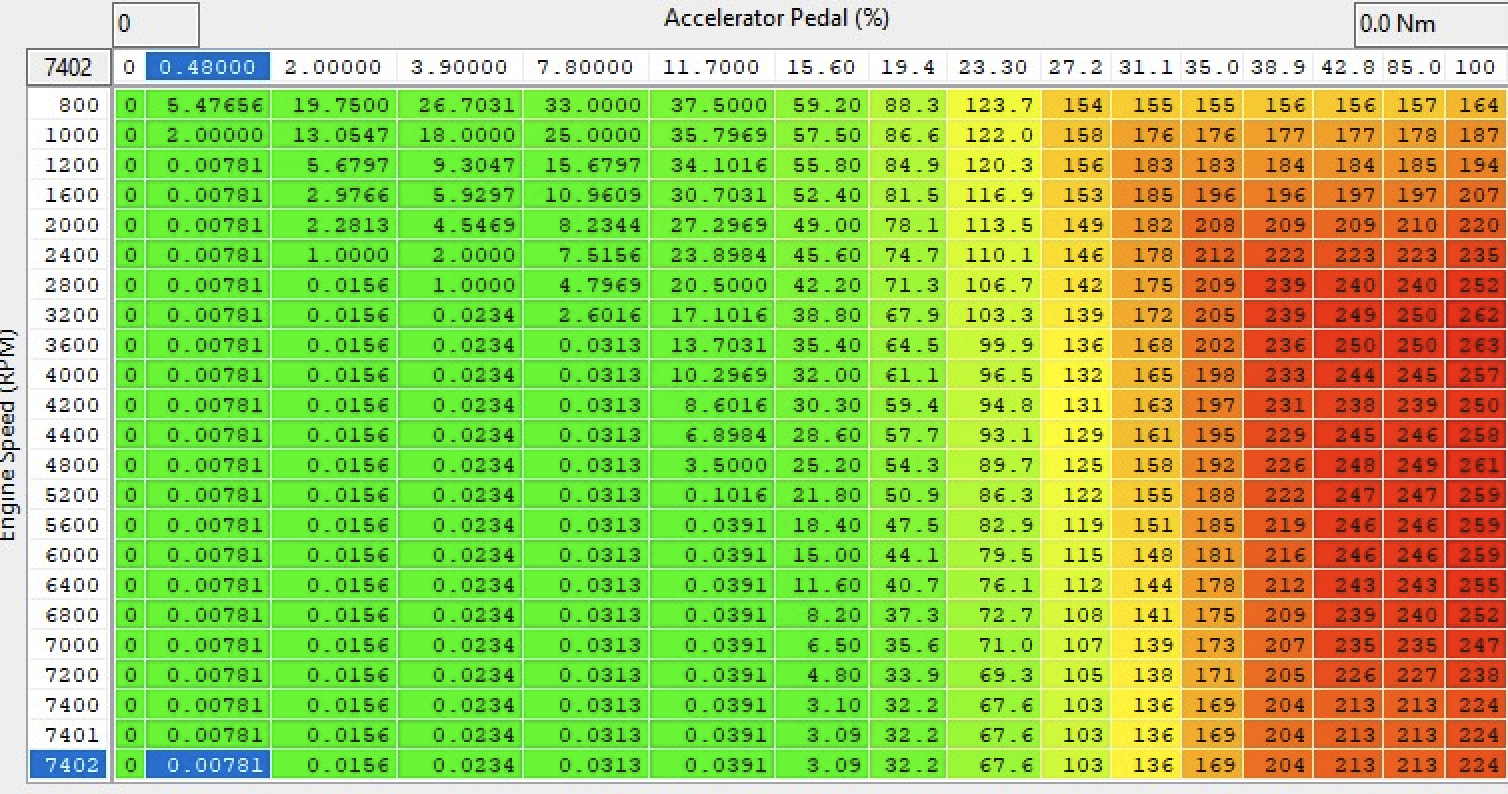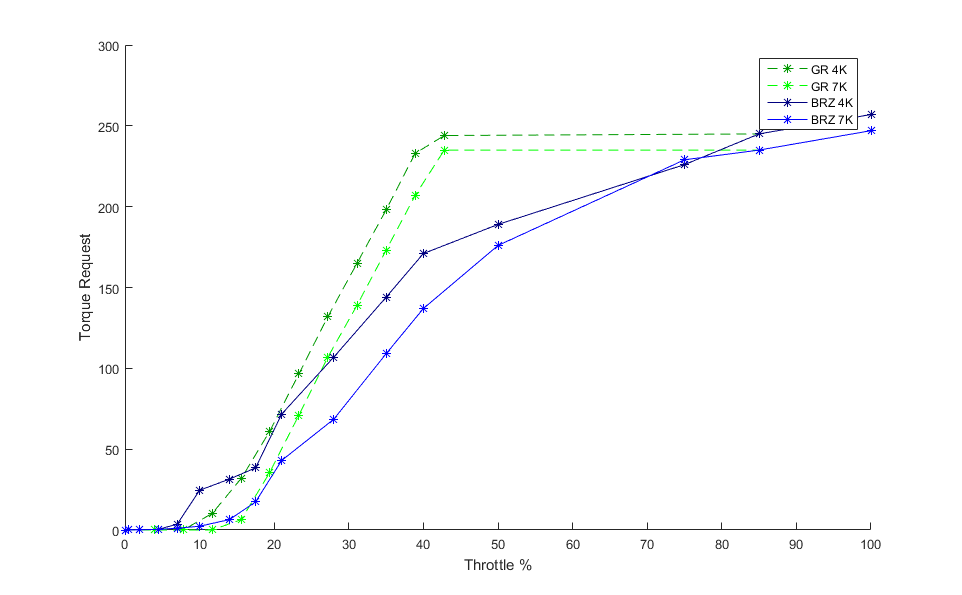GR86 vs BRZ: Technically Speaking

Many people make their 86 purchasing decision based on looks or brand affiliation. There's nothing wrong with that, but there are a handful of material differences you’ll want to be aware of before buying a second generation twin.
I’ll leave out the subjective differences, like styling, and focus on the technical bits.
Powertrain
No difference. It’s an FA24, like it or not.
Suspension
GR86 has a stiffer rear end and slightly softer front end. This leads to more oversteer bias, but also more eager turn-in.
Spring Rates
First let's look at the spring rates, without considering suspension geometry.
Because people are familiar with different units, I’ll provide conversions for several commonly used suspension units, but you can just focus on the one you prefer.
GR86 Spring Rates
| Nm/mm | kg/mm | lbs/in | |
|---|---|---|---|
| Front | 28 | 2.85 | 160 |
| Rear | 39 | 3.98 | 223 |
BRZ Spring Rates
| Nm/mm | kg/mm | lbs/in | |
|---|---|---|---|
| Front | 30 | 3.06 | 171 |
| Rear | 35 | 3.57 | 200 |
Wheel Rates
Wheel Rate describes the effective spring rate at the wheel, correcting for suspension geometry.
You can calculate wheel rate applying Motion Ratio squared to the Spring Rate.
spring rate * (motion ratio)2 = wheel rate
Motion ratio describes the ratio between the length from the inboard suspension mounting point to the wheel and the mounting point of the spring. Springs mounted further inbound have less leverage over the wheel travel, so you typically need higher spring rates to compensate.
In the 86/BRZ suspension, the use of MacPherson struts in the front mean the springs are mounted very close to the wheel, so the motion ratio is nearly 1:1. At the rear, the multilink suspension has the coilovers (and thus springs) mounted about 78% of the way to the wheels, so higher spring rates compensate for the reduced leverage.
To make the tables below, I applied the following calculation to arrive at an estimate for wheel rate:
front spring rate * 0.952 = front wheel rate
rear spring rate * 0.782 = rear wheel rate
GR86 Wheel Rates
| Nm/mm | kg/mm | lbs/in | |
|---|---|---|---|
| Front | 25.3 | 2.57 | 144 |
| Rear | 23.7 | 2.42 | 136 |
BRZ Wheel Rates
| Nm/mm | kg/mm | lbs/in | |
|---|---|---|---|
| Front | 27.1 | 2.76 | 154 |
| Rear | 21.3 | 2.17 | 122 |
If you compare these tables to the table with raw spring rates, you can see how the rear suspension geometry significantly reduces the wheel rates.
You can also see how Toyota and Subaru went for a pretty dramatically different setup. For the GR86, front wheel rates are only 5.9% stiffer than the rear, but on the BRZ, the front rates are 27% stiffer.
Running stiffer wheel rates in the front makes sense, given the forward weight distribution of the vehicle. With a 54/46 weight distribution, you would have 17% more weight on the front. Once you add a driver, you will likely be in the 25% range. So additional front spring rate is expected to help manage that weight, but Subaru goes much further in this direction than Toyota.
If you went with an aftermarket square spring rate setup (identical spring rates front and rear), you would end up with even more front-biased spring rates than the BRZ.
Sway Bars
Sway bars are a different type of spring that only affect the spring rates in corners. The sway bars follow a similar philosophy to the coilover spring rates, with the GR86 having a firmer rear end and softer front end.
| GR86 | BRZ | Comparison | |
|---|---|---|---|
| Front | 18mm solid | 18.3mm hollow | BRZ is 2.3% stiffer |
| Rear | 15mm solid | 14mm solid | GR86 is 32% stiffer |
Bounce Frequency
Another way we can look at suspension differences between these cars is the Bounce Frequency. This term describes the natural frequency (oscillations per second) at which an axle will bounce after it goes over a bump. Imagine if you removed the dampers on your car so the oscillation from a bump was not resisted. Both axles would bounce a certain number of times per second as the tires were weighted and then unweighted. That's the bounce frequency.
| Front (Hz) | Rear (Hz) | Ride Characteristic | |
|---|---|---|---|
| GR86 | 1.38 | 1.50 | Flat Ride |
| BRZ | 1.43 | 1.42 | Pitch Ride |
When the rear frequency is higher than the front, we call this Flat Ride. The GR86 has this ride characteristic. Flat ride is a technique that suspension designers use to try and settle the car as it goes over a bump. The front axle hits bumps first, followed by the rear axle after a delay (the car has to travel the length of th wheelbase before the rear axle encounters the same bump).
In order to make up for this delay, the frequency of the rear axle can be faster, so the front and rear converge on the same suspension movement, despite different starting points.
The alternative ride characteristic, Pitch Ride, is employed by the BRZ. This describes a suspension where the front axle has a frequency as fast or faster than the rear axle. With pitch ride, you don't get the benefit of the natural motion of the axle converging and it could result in the front and rear axles pitching up or down.
For way more detail, check out this detailed suspension calculator, which was also the source for this section.
Mitigations
Both coilovers and sway bars are easy components to swap out and stock suspension is very cheap to buy used. You can easily mix and match parts to get the ride you're looking for, or go aftermarket.
Steering
GR86 has a carry-over steel front knuckle from the Gen 1 cars, while the BRZ has a new aluminum front knuckle. The aluminum knuckle reduces unsprung mass and will not rust.
Steering feel
Some people claim the reduction in unsprung mass would make the steering feel slightly on the BRZ, but people who have driven both cars tend to say the BRZ steering is heavier. This is likely due to different electric power steering (EPS) tuning. I have driven a GR86, but it had coilovers so there were so many differences, I can't comment directly on steering feel.
EPS Cut-out
I have noticed on my BRZ that in high compression turns, the EPS unit cuts out. This has been reported by other BRZ drivers with stock-ish setups as well, including others in 86 Challenge. This does not seem to affect GR86 until you move to significantly higher grip setups.
The theory is currently that the suspension loads up from the compression and overwhelms the EPS motor, causing it to cut out to protect itself from damage. In the car, this feels like the wheel first loosens and then becauses stiff. It breaks the illusion of direct control over the vehicle and is quite disconcerting.
BBK Compatibility
The BRZ aluminum knuckle has some compatibility differences with BBKs:
- Essex/AP Racing modified their Endurance kit to accomodate the Gen 2 BRZ knuckle, so it is compatible.
- CSG’s Spec kit warns BRZ customers they must get the BM-4 caliper, not standard Brembo GT kit.
- The Gen 1 Performance Package Brembos have been confirmed to fit, but you have to swap the mounting bolts to longer bolts from the WRX and ditch the harmonic damper.
Interestingly, to fit Brembos on the BRZ tS, Subaru went back to the steel knuckle, like the GR86.
Mitigations
The EPS cut-out and tuning differences are quite hard/expensive to address in the aftermarket. There are higher-powered EPS motors that can be swapped, but this is likely in the $4,000+ range.
Tuning
The BRZ has more linear throttle mapping than the GR86. This is beneficial for modulating power at the limit of grip.
You can think of throttle mapping as a function with engine speed (RPM) and throttle pedal position (PPS) as inputs and torque demand as output.
(RPM, PPS) -> Torque Demand
It seems Toyota decided to make the GR86 feel more responsive by making the throttle mapping extremely aggressive. Some automotive reviewers have mentioned that they feel like the GR86 is more eager to accelerate, and this is likely the reason. It may help for hot-take reviews, but this is not beneficial in performance driving applications.
The following tables show the throttle pedal position on the x-axis and the engine speed on the y-axis. The values in the table represent the torque demand (in Nm) the ECU will ask from the engine. You don’t need to spend too much time analysing this, but it’s useful to know how this works.

The following chart is a simplified visualization of the table above. The x-axis is the pedal position and the y-axis is torque demand. The GR86 mapping at 4,000 RPM and 7,000 RPM is represented by the two green lines and BRZ by the blue lines.

You can see the GR86 has effectively no difference in torque demand once you get past 40% pedal position, whereas the BRZ does not request full torque demand until you’re at 100% pedal position.
If you are at the limit of grip and using the throttle pedal to control the attitude of the car, you may be surprised to find out that majority of the thorttle pedal travel does nothing on the GR86!
Mitigations
This cannot be changed without a tune, which is very likely to void your warranty. In theory it would be possible to develop a device that can send spoofed throttle pedal positions to the ECU, but this would introduce risk, as throttle is a safety-critical system.
Service & Warranty
While not strictly technical, it’s worth mentioning that you may have a more difficult time getting your GR86 serviced at a Toyota dealer, since techs will be less familiar with the car. Replacement parts also tend to be more expensive at Toyota dealers, although this can vary significantly. Subaru parts sold through Toyota will have a prefix of SU, allowing you to tell whether a given part is a Subaru or Toyota part.
While there are no guarantees, it seems that Subaru is more likely to warranty repair blown engines than Toyota, from my anecdotal observations.
Mitigations
If you’re planning to do most of your own maintenance, then Toyota dealer tech competence may not be a big factor in your decision.
Conclusion
Either way you’re getting a very fun car and a great learning tool for around $30,000.
What did I miss?